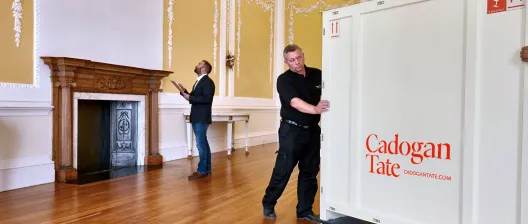Different shades of the mighty Anthony Caro
Sir Anthony Caro is one of the UK’s most beloved abstract sculptors, whose body of work is considered to be just as good, if not better, than the untouchable giant that is Henry Moore. Widely revered around the world, the consummate artist, who has been working for the best part of 60 years, is the subject of an exciting new show.
Caro: Close Up at the Yale Center for British Art marks the first major exhibition of his work in the US since his landmark retrospective at the Museum of Modern Art in 1975.
Such disconnect in time has not troubled the museum because it has intelligently brought together more than 60 drawings and sculptures that independently and collectively deliver new lines of thought and insight into the artist and his oeuvre.
The show focuses on some of the amazing early drawings produced by Caro, as well as a number of small-scale sculptures that he has wonderfully executed throughout his professional career.
It is twice as exciting for the fact that many of the works, which have come from private lenders on both sides of the Atlantic, the Museum of Modern Art and the Metropolitan Museum of Art, have not been shown before in public.
The drawings in particular are a revelation, as if we, the public, have been afforded the privilege of being in the company of something sacrosanct. While sketching is part of the process in which Caro designs his sculptures, the drawings being exhibited are in themselves independent works of art.
They have no direct connection with his sculptural work, and have been produced with no real intention of ever going on public display. They have come into existence by way of metaphysical compulsion. What else is one to do with the day, with life?
His answer to this is observable in the palpable shift from the figurative manifestations that defined his early predilections for art to his more interesting love affair with abstract constructs.
This decisive shift came about largely after Caro had an enlightening experience when visiting America in 1960. It was here that he first stumbled upon the work of Kenneth Noland, Jules Olitski, and David Smith.
Beyond this trip, his output began to take on a categorically modernist feel. While on a personal level it was sweet poetry for him to have discovered a more purposeful approach to art, it also elevated him to become a master of sculpture. His work was finally recognised as being beyond pleasant. It was inspirational.
The Independent’s John Walsh captured Caro perfectly, with unashamedly impartial language, in an article in 2008. As biased as it was, it was entirely accurate.
“He is the modernist pioneer of abstract sculpture who can never stop flirting with figurative forms,” Walsh wrote.
“He has been compared to J M W Turner (though he isn’t a painter). He’s a sophisticated theorist about the relationship between sculpture and architecture, who (sometimes) doesn’t mind members of the public clambering over his work… He is, beyond a doubt, the most significant person who ever came out of New Malden.”
Now aged 88, Caro is still as prolific as ever. It reaffirms the idea that without art, to take a break from sculpture and watch the world go by – however great – just isn’t quite right for some people, the grand maestro himself included. Peaceful and easy is not nirvana.
So long may he continue to overwhelm in the field of sculpture as he keeps on learning, exploring and pushing the envelope. Like Moore, Caro has confounded the limits of what we understand. And he still has plenty to say.
Caro: Close Up at the Yale Center for British Art runs until December 30th 2012.
Cadogan Tate works closely with artists, galleries and museums to deliver art storage solutions.



